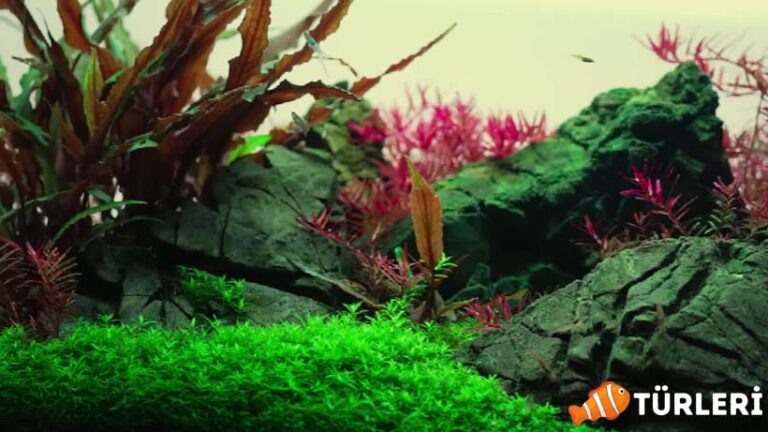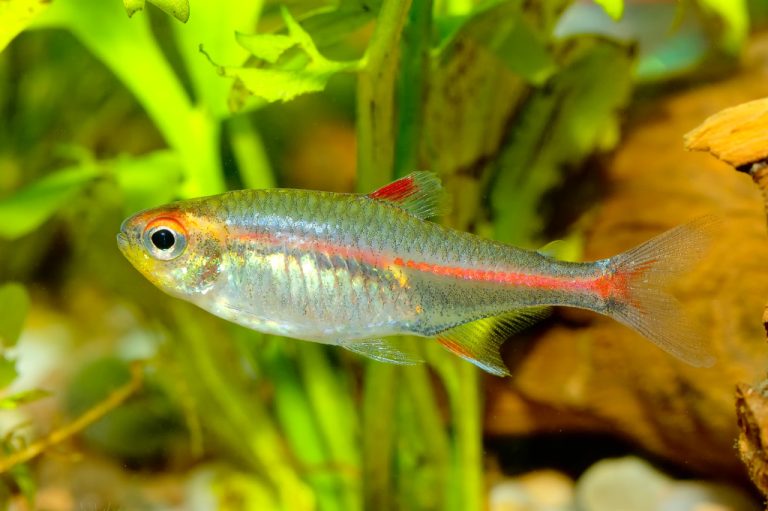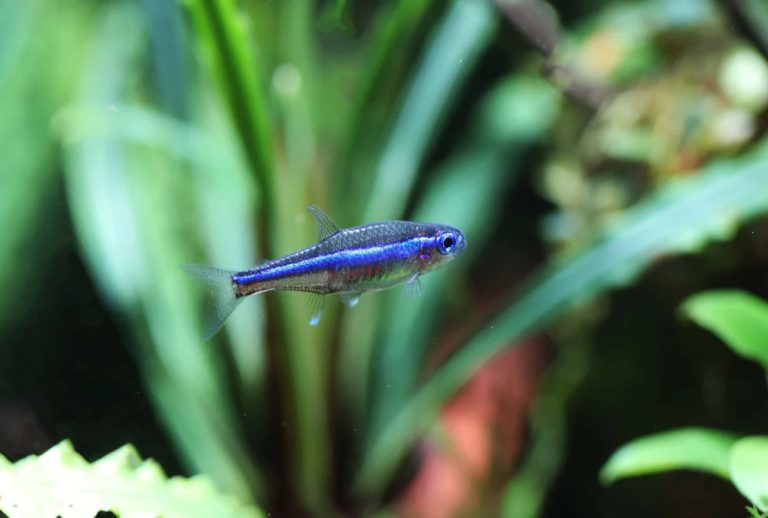Discus Fish Guide
Discus fish are one of the most elegant and captivating members of the aquarium world. Originating from the Amazon River in South America, these magnificent creatures have won the hearts of aquarium enthusiasts with their colors, shapes, and unique behaviors. But is their care easy, or is there a more complex world behind this elegance? Whether you are thinking of starting an aquarium hobby or already own a Discus fish, in this article, we will examine everything from the history of the Discus fish to its feeding habits, breeding, and buying guide in detail. Are you ready to be a part of this enchanting underwater world?
Summary of the Discus Fish Species

| Scientific Name: | Symphysodon |
| Natural Habitat: | Amazon forests in Brazil, Peru, and Colombia |
| Care Difficulty: | Medium difficulty. It’s necessary to frequently change the water to maintain consistent water parameters. |
| Size: | Up to 15 centimeters |
| Discus Fish Temperament: | Generally very peaceful. They become territorial during breeding season. |
| pH: | The ideal pH value is between 6.0 and 7.0. A pH value exceeding 7 or dropping below 6 causes stress in discus fish. However, some species bred in aquariums might not face issues even with a pH value up to 8. |
| Temperature: | The temperature should be between 27 and 30 degrees Celsius. Due to the decrease in oxygen levels at higher temperatures, the number of fish should be relatively low. |
| Water Hardness: | Should be between 1-8 dH. This simulates the soft water of their natural habitat. To decrease water hardness, driftwood can be used. |
| Aquarium Size: | A minimum of 200-liter deep aquarium is required. |
| Average Lifespan: | With proper care, they can live up to 10 years. |
| Swimming Level: | They generally swim in the middle part of the aquarium. |
| Discus Fish Gender: | During the breeding season, the reproductive tube becomes prominent; it’s pointed in males and round-tipped in females. Females are generally more vividly colored but have fewer patterns. Male fish colors are usually more muted, and they have more patterns on their bodies. Adult males of the same age are generally larger than females. Male fish have a more aggressive temperament. They especially want to protect their mates from other males. |
Characteristics of Discus Fish
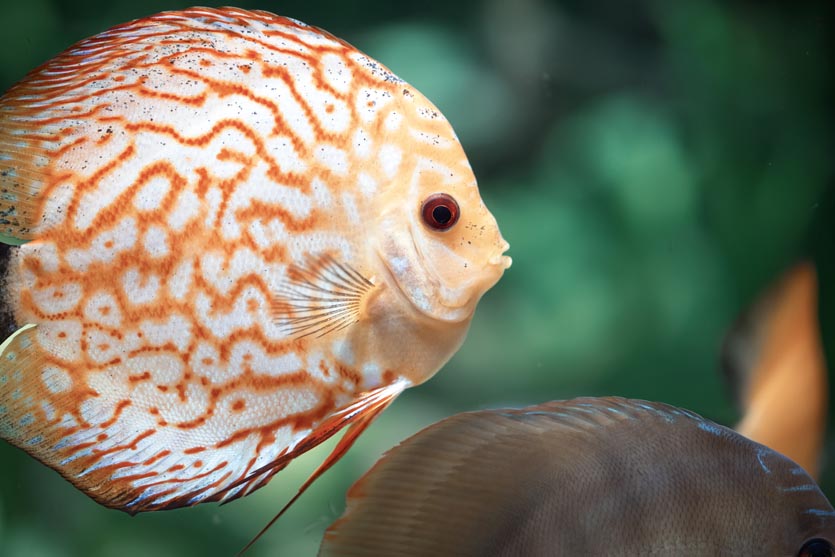
The Discus fish is one of the most popular and prestigious fish in the aquarium world. Taking a closer look at the features of this unique fish can help us understand why it is so beloved.
Color and Pattern: Discus fish can come in a variety of colors and patterns. They can be found in red, blue, green, orange, and many more colors. Their patterns are also diverse, and each fish displays its own distinct beauty.
Body Structure: The Discus fish has a round and flat body, resembling the disc shape from which it gets its name. This shape allows the fish to move gracefully through the water.
Size: An adult Discus fish can grow up to 15 cm. Juvenile fish are smaller in size and grow over time.
Behavior: Discus fish typically have a calm and peaceful demeanor. They enjoy living in groups, so they should not be left alone in the aquarium.
Lifespan: With the right care conditions, a Discus fish can live up to 10 years. This demonstrates how vital careful maintenance and proper aquarium conditions are for the species to lead a healthy life.
In short, these unique features make the Discus fish one of the most alluring members of the aquarium hobby. Their colors, shapes, and behaviors make these fish an attractive option for both experienced and novice aquarium owners.
Fish That Live With Discus
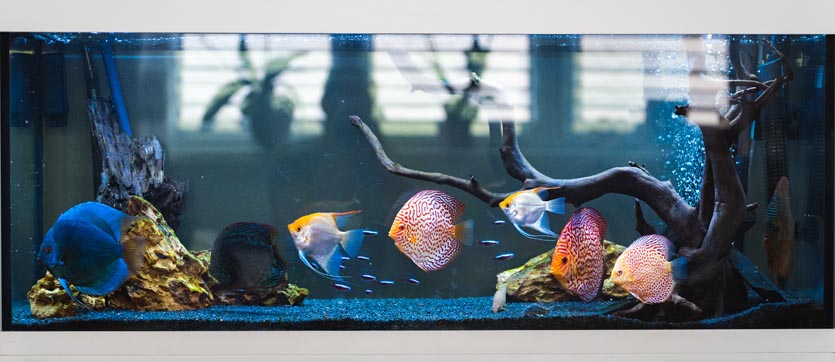
Discus fish, thanks to their peaceful nature, can coexist with many different species of fish. However, there are crucial points to consider when choosing fish to live alongside them. First and foremost, it’s necessary to select fish that can thrive in the same water conditions. Discus fish prefer warm water, so they should be kept with other fish that have similar temperature preferences.
Some compatible fish include types of tetras (Cardinal tetra, black neon tetra, rummy-nose tetra, pink tetra, and red phantoms), dwarf cichlids, ramirezi, and certain catfish species. These are species that can live alongside Discus fish, having the same water conditions and dietary needs. Carefully selecting such species is critical to ensuring both Discus fish and the other fish can lead healthy and happy lives.
Discus Fish Nutrition

For Discus fish to lead a healthy and happy life, it’s essential to pay careful attention to their nutrition. These elegant and captivating fish require a specific diet, so offering them appropriate food is paramount.
Natural Diet: In the wild, Discus fish feed on invertebrates, algae, and other aquatic plants. Maintaining these natural feeding habits in the aquarium is healthiest for them.
Types of Food: In aquarium stores, there are frozen or dried foods specially designed for Discus fish. Additionally, live foods can be used. Live feeds like Artemia, bloodworms, and daphnia are ideal for meeting the dietary needs of Discus fish.
Feeding Time: Discus fish can be fed 2-3 times a day. Adjusting the amount of food to what the fish will consume is important to maintain water quality.
Vitamins and Minerals: It might be beneficial to use foods containing vitamins and minerals that Discus fish need for healthy growth. Occasionally, special vitamin supplements can also be added to the water.
Special Dietary Needs: Some Discus fish species may have special dietary needs. Therefore, it could be helpful to consult an expert about the specific type of Discus fish being fed.
In conclusion, the dietary needs of Discus fish can be met with both natural and specialized feeds. Providing them with a healthy diet will help maintain their vibrant colors, support growth, and ensure they lead a long, healthy life. As every fish might have its unique needs, it’s also essential to be knowledgeable about the specific type of Discus fish you’re feeding. Care and attention when feeding these beautiful fish will assist in showcasing them at their best.
Discus Diseases
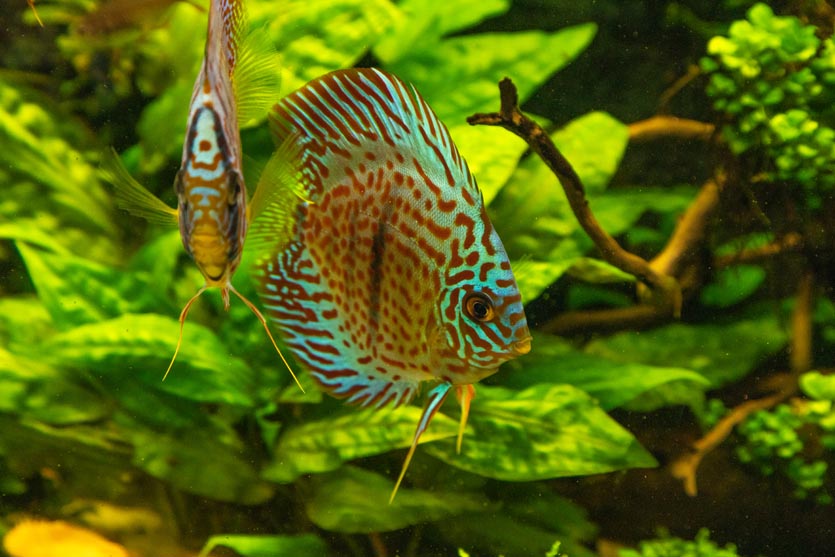
Although Discus fish are known for their splendid colors and graceful movements, they can be sensitive to diseases due to their specific care needs. Here’s some information about the most common Discus fish diseases and how they can be prevented:
- Internal Parasites: Internal parasites can frequently be a problem in Discus fish. This usually results in the fish losing its appetite and becoming weak. They can be treated with specific medications, but the best prevention is to use quality feed and maintain good water quality.
- Fungal Infections: Factors such as poor water quality and incorrect water temperature can lead to fungal infections. Quick diagnosis and appropriate medications can manage this condition.
- Hole-in-the-Head Disease (Hexamita): This disease can cause holes to form in the fish’s head and body. Antibiotic treatment is typically the most effective way to address this.
- Bacterial Infections: High stress and poor water quality can lead to bacterial infections. Early diagnosis and proper treatment can control this situation.
Prevention:
Most Discus fish diseases arise from improper water conditions or stress. Therefore, regular water changes, the right water temperature, maintaining pH balance, and efficient filtration are the most effective ways to prevent most of these diseases.
To ensure Discus fish live a healthy and happy life, providing proper care is the best way to prevent diseases. However, it’s also crucial to treat any disease symptoms promptly and effectively if they’re observed. It’s worth noting that a healthy aquarium environment will help keep Discus fish free from such diseases. If you encounter a suspicious situation, always consult an expert.
Reproduction in Discus Fish – Discus Fish Breeding:
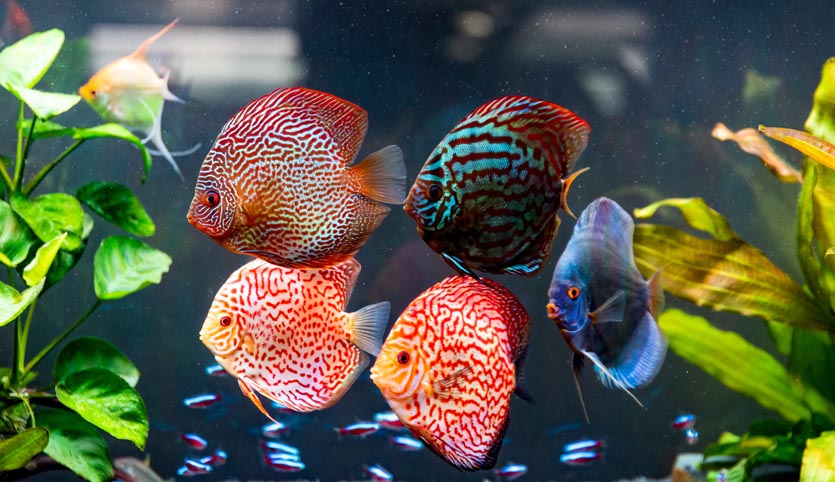
Breeding Discus fish can be of great interest to many aquarium enthusiasts. Producing these magnificent fish requires patience and care, but the reward can be truly fulfilling. Here’s what you need to know about Discus fish breeding:
Mate Selection
Successful reproduction starts with choosing the right pair. Gender distinction can be challenging, so it’s usually best to wait for a natural pairing to form among adult fish.
Aquarium Conditions
Using a dedicated aquarium for breeding is best for ensuring the healthy growth of the fry (baby fish). The water temperature should be maintained between 28-30°C (82.4-86°F) and the pH level should be kept between 6-7.
Egg Laying
The female Discus lays her eggs on a flat surface. The male then passes over the eggs to fertilize them. Having the eggs on a flat surface facilitates easier cleaning and care.
Fry Care
After hatching, the fry feed on a fluid found on the parents’ skin during their initial days. They can later be fed live foods like Artemia (brine shrimp).
Disease Prevention
The fry can be highly susceptible to diseases. Therefore, maintaining high water quality and regular checks are critically important for their healthy growth.

Breeding Discus fish is a process that requires knowledge and experience. However, when the right steps are taken, producing these beautiful fish can be incredibly rewarding. Being patient, diligent, and closely monitoring the process are keys to successful breeding. One of the most beautiful aspects of this process is the healthy bond that forms between the parents and their fry, making Discus breeding unique. If you encounter any problems, it’s best to consult an expert to ensure the healthy growth of these magnificent fish.


